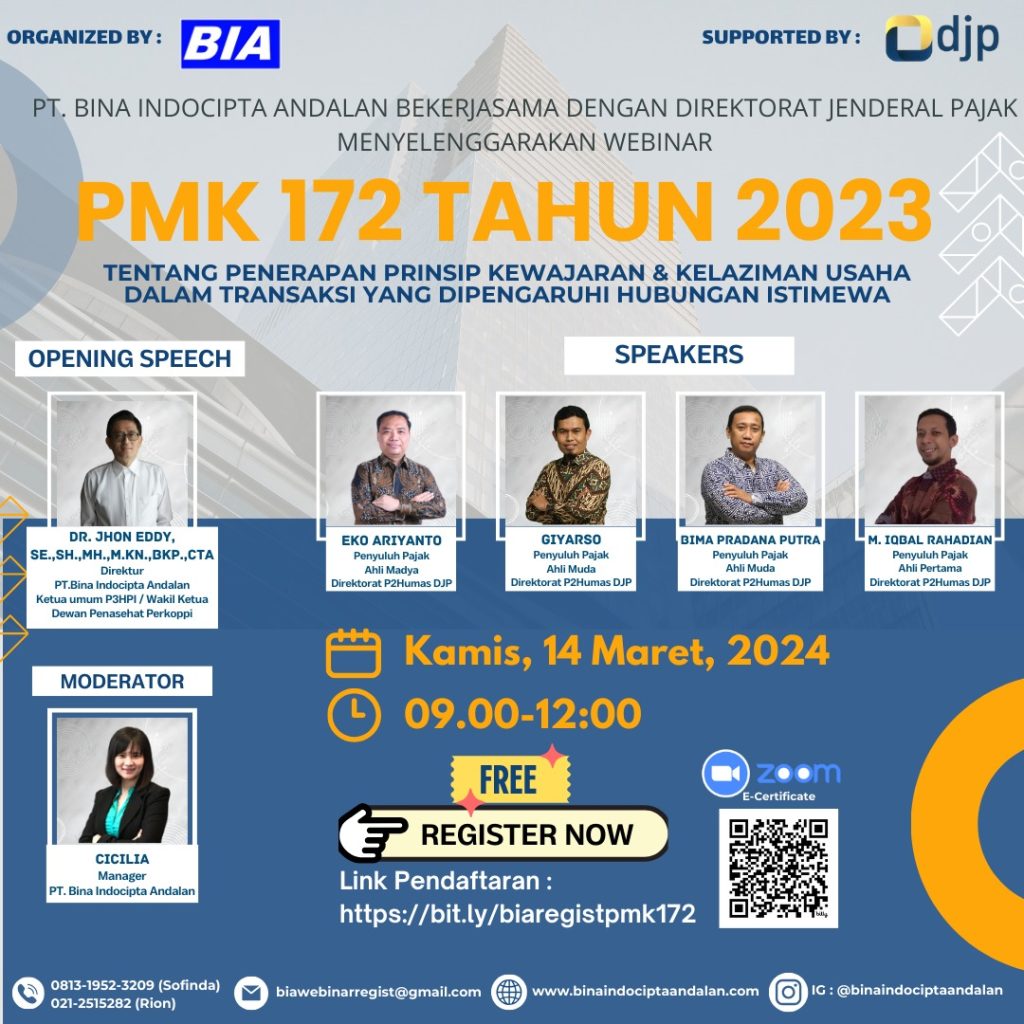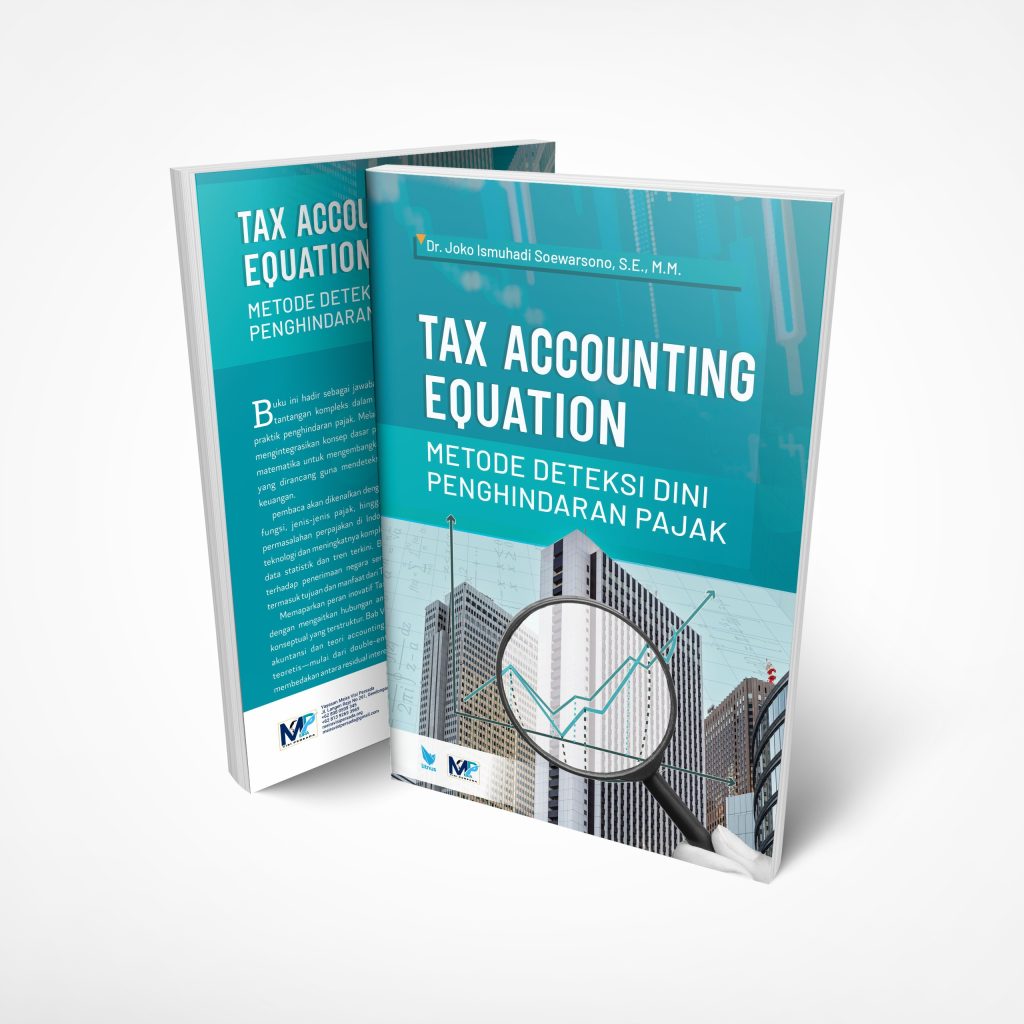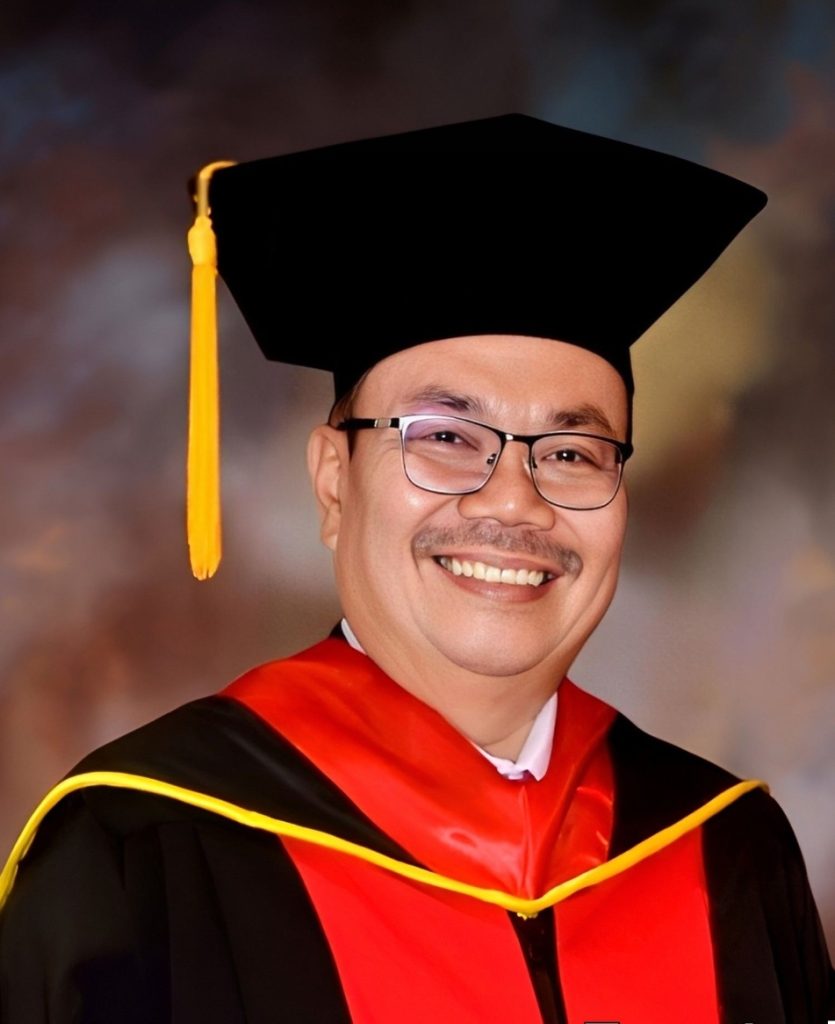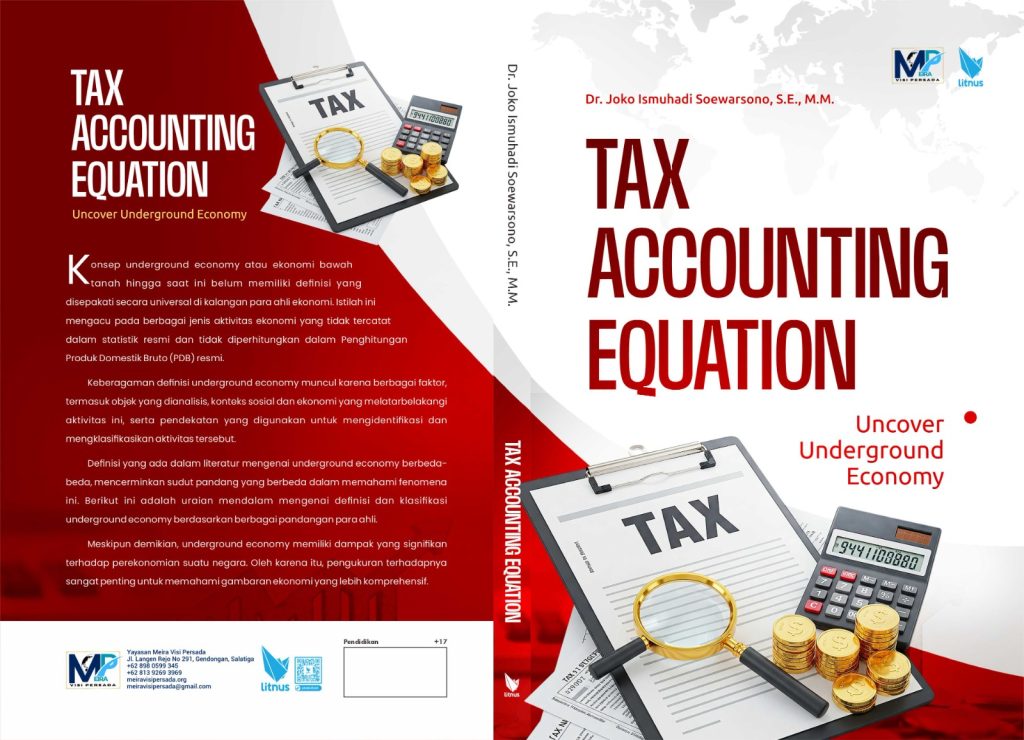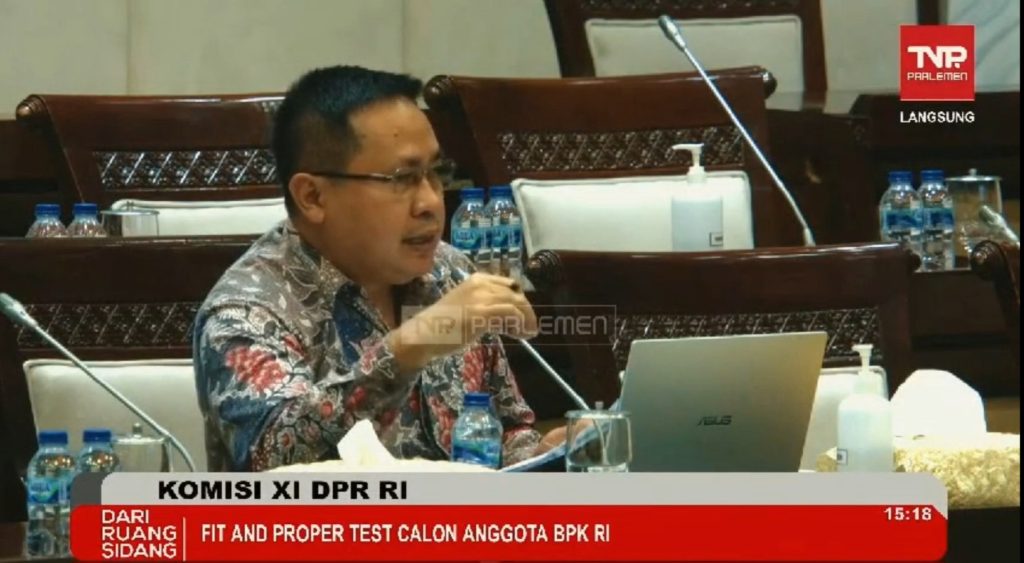
Analyzing Dr. Joko Ismuhadi’s Tax Accounting Equation
- Ekonomi
Saturday, 22 March 2025 06:04 WIB
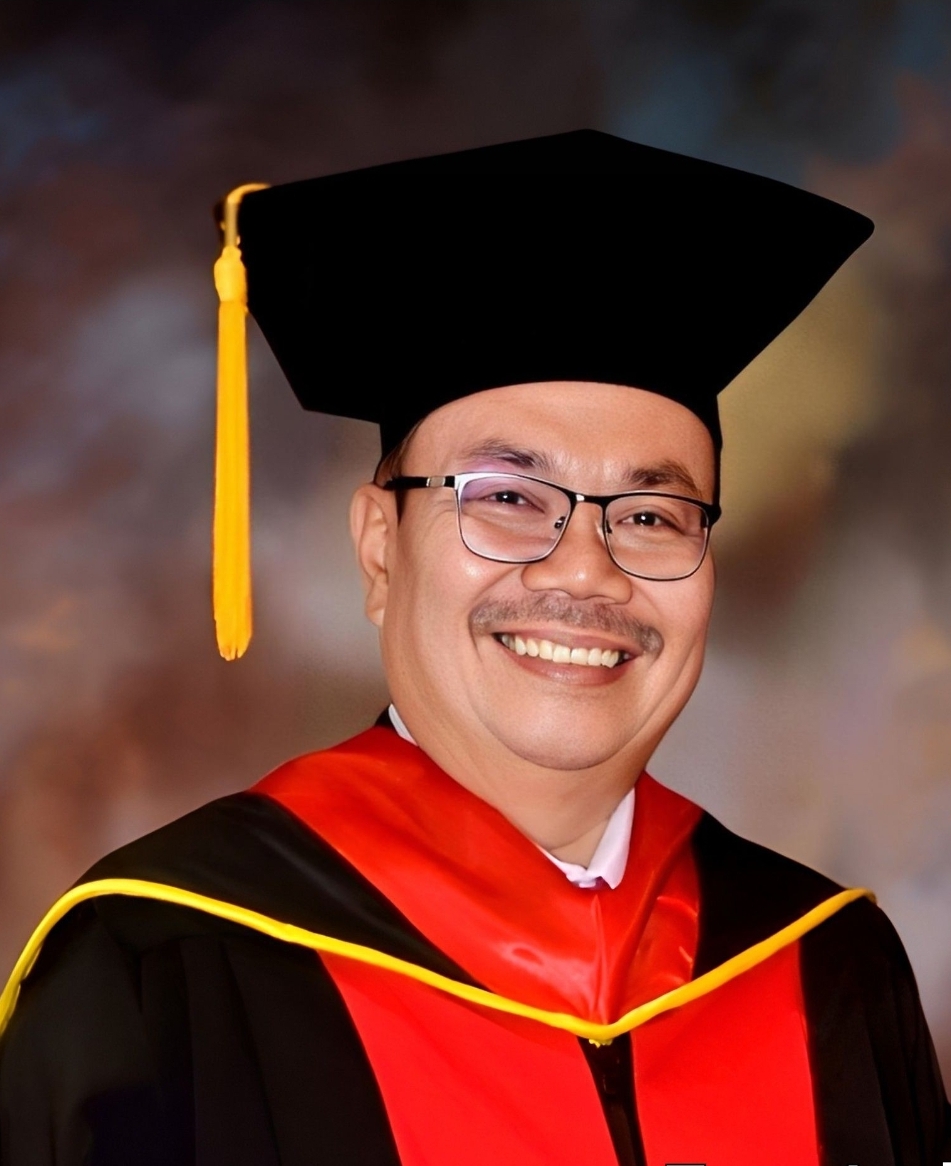
Jakarta, fiskusnews.com:
The landscape of tax accounting is continuously evolving, demanding sophisticated analytical tools to ensure compliance and effectively identify instances of evasion. Dr. Joko Ismuhadi Soewarsono emerges as a significant contributor in this field, particularly through his development of the “Tax Accounting Equation (TAE)” and the “Mathematical Accounting Equation (MAE)”. These proposed equations offer a framework for scrutinizing financial data with the specific aim of detecting potential tax avoidance and evasion strategies .
Dr. Joko Ismuhadi Soewarsono’s profile reveals a blend of academic rigor and practical experience that underpins his work in tax accounting. He is a PhD student at Padjadjaran University in Bandung, Indonesia, specializing in accounting . His academic pursuits are complemented by his role as a Tax Auditor at the Directorate Generale Tax in Jakarta, Indonesia, providing him with firsthand exposure to the complexities of tax administration and compliance . Furthermore, his designation as a doctor in tax criminal law and a doctor candidate in tax accounting underscores his interdisciplinary approach to the subject . Dr. Ismuhadi’s research interests, as indicated on ResearchGate, encompass a wide range of financial and tax-related areas, including tax planning, financial engineering, scheme transactions, corporate finance, and valuation . This broad expertise likely informs his unique perspective on tax accounting analysis. His engagement in academic discussions on platforms like ResearchGate, where he has explored topics such as tax evasion through mathematical approaches and the analysis of digital services taxes, further highlights his active involvement in the scholarly community . Additionally, Dr. Ismuhadi is the author of “Tindak Pidana Korporasi. Analisis Manipulasi Pajak dengan Perbuatan Pencucian Uang” (Corporate Crime. Analysis of Tax Manipulation with Money Laundering), demonstrating his focus on the intersection of tax offenses and financial manipulation . This publication suggests a keen interest in the forensic aspects of tax compliance. His research focus on financial engineering and scheme transactions is particularly relevant to the challenge of tax avoidance and evasion. Individuals with expertise in this area often possess a deep understanding of intricate financial structures that can be exploited for tax optimization or, in some cases, evasion. Dr. Ismuhadi’s background likely provides him with the insights necessary to develop analytical tools capable of identifying such practices . His book focusing on corporate crime and tax manipulation further indicates a specific interest in the legal and fraudulent dimensions of tax non-compliance. This forensic orientation suggests that his proposed equations are likely designed to uncover patterns indicative of intentional tax evasion .
The “Tax Accounting Equation (TAE)”, as identified in research, serves as an overarching concept for tax-focused financial analysis developed by Dr. Joko Ismuhadi Soewarsono . A presentation on Financial Engineering mentions “Tax Accounting Equation (TAE); Joko Ismuhadi Soewarsono”, hinting that revenue (R) is a significant component within his conceptualization . Given the context of financial engineering, which often involves strategies to optimize financial outcomes, including tax liabilities, the inclusion of revenue in the TAE suggests its importance in detecting potential manipulations. The TAE is also referenced in materials related to audit and transfer pricing as “Tax Accounting Equation (TAE). Joko Ismuhadi Soewarsono” . This suggests that the TAE might be applicable in evaluating the fairness and compliance of financial transactions from a tax perspective, as both auditing and transfer pricing analysis require a thorough examination of financial activities to ensure adherence to tax regulations. While the specific formula or detailed principles of the TAE are not explicitly detailed in the available information, it functions as a foundational idea for conducting financial analysis with a specific focus on tax implications.
Building upon this foundational concept, Dr. Ismuhadi has also developed the “Mathematical Accounting Equation (MAE)”, which provides a specific formula for analysis. The MAE is presented as: Asset = Liability + Equity + {(Revenues – Expenses) – Dividend} . This equation expands upon the standard accounting equation by explicitly incorporating elements from the income statement and cash flow statement. The components of the MAE are consistent with standard accounting definitions: Assets represent the resources owned by the entity, Liabilities are the obligations owed to external parties, and Equity is the residual interest in the entity’s assets after deducting liabilities. The additional components are Revenues, representing inflows from the entity’s operations; Expenses, representing outflows related to those operations; and Dividend, which signifies distributions of earnings to the owners. The key difference between the MAE and the standard accounting equation (Assets = Liabilities + Equity) lies in the inclusion of the term + {(Revenues – Expenses) – Dividend}. This term represents the change in equity resulting from net income (Revenues – Expenses) less any dividends paid out. Dr. Ismuhadi’s rationale for developing the MAE is to provide a tool to assess whether corporate taxpayers are making a significant contribution to corporate income tax. Specifically, it aims to identify situations where there is a lack of correlation between reported profits, changes in equity through retained earnings, and the declaration of dividends . The reversed form of the MAE, Asset + Dividends + Expenses = Liabilities + Equity + Revenues, offers an alternative perspective on the equilibrium of these financial elements . Dr. Ismuhadi connects the MAE to the definition of Income as per Article 4 Paragraph (1) of the Indonesian Income Tax Law (UU PPh), which defines income as any additional economic capacity received or obtained by the taxpayer . He posits that his equation can help determine if reported revenues are consistent with the expected increase in a taxpayer’s economic capacity.
Dr. Ismuhadi explicitly states that his “small book entitled: Tax Accounting Equation (TAE): early detection tax avoidance and/or tax evasion can be used as an early detection tool for Corporate Taxpayers committing tax avoidance and/or evasion” . One specific application of the MAE highlighted in his work is the detection of back-to-back loan transactions used as a method for tax evasion . In such schemes, taxpayers might attempt to disguise sales revenue as debt disbursement through back-to-back loans to avoid recognizing the income as taxable. Dr. Ismuhadi observes that in these scenarios, “Revenues = (negative) Liabilities, meaning that there is a tendency for Taxpayers to evade taxes by narrating that the money received is not a tax object because it comes from debt disbursement and not from sales proceeds which are a tax object” . This suggests that the MAE can potentially reveal instances where an increase in liabilities is not accompanied by a corresponding increase in assets or equity derived from revenue-generating activities, which could be an indicator of disguised revenue. Furthermore, the MAE can be employed to assess if there is a lack of significant corporate income tax contribution or an absence of change in equity from retained earnings without any dividend declaration . This reinforces the equation’s utility in identifying potentially concealed or unreported profits. Dr. Ismuhadi proposes that tax authorities, such as the Directorate General of Taxes (DGT), should further develop the Substance Over Form Doctrine and enhance the implementation of the General Anti Avoidance Rule (GAAR) based on the analytical framework provided by his TAE/MAE .
To understand the significance of Dr. Ismuhadi’s contribution, it is crucial to compare his MAE with the standard accounting equation: Assets = Liabilities + Equity . The standard equation represents the fundamental balance between a company’s resources (assets) and the sources of its financing (liabilities and equity). Dr. Ismuhadi’s MAE distinguishes itself by explicitly incorporating the impact of Revenues, Expenses, and Dividends, which are typically reflected as changes within the Equity component of the standard equation, specifically through retained earnings.
| Component | Standard Accounting Equation | Dr. Ismuhadi’s MAE | Key Difference | Purpose/Focus |
|---|---|---|---|---|
| Assets | Included | Included | Same | Both reflect economic resources |
| Liabilities | Included | Included | Same | Both reflect obligations to external parties |
| Equity | Included | Included | Same | Both reflect the residual interest in assets |
| Revenues | Implicitly (in Equity) | Explicitly Included | MAE provides a direct link to income generation | Standard focuses on balance; MAE focuses on income and its impact on the balance sheet for tax analysis |
| Expenses | Implicitly (in Equity) | Explicitly Included | MAE provides a direct link to the costs incurred | Standard focuses on balance; MAE focuses on income and its impact on the balance sheet for tax analysis |
| Dividend | Implicitly (in Equity) | Explicitly Included | MAE provides a direct link to the distribution of profits | Standard focuses on balance; MAE focuses on income and its impact on the balance sheet for tax analysis |
| Formula | Assets = Liabilities + Equity | Asset = Liability + Equity + {(Revenues – Expenses) – Dividend} | MAE expands the standard equation to include the components of net income and dividends | Standard shows financial position balance; MAE aims to detect tax discrepancies through profit and dividend analysis |
By separately including revenues, expenses, and dividends, the MAE offers a more detailed and dynamic perspective on the factors that influence equity. This allows for a more direct analysis of a company’s profitability and how it is distributed in relation to its asset and liability balances. While the standard equation ensures the fundamental accounting balance, Dr. Ismuhadi’s MAE seeks to leverage this balance to infer potential inconsistencies related to tax reporting by scrutinizing the expected impact of profit generation and dividend distribution.
Dr. Ismuhadi’s TAE and MAE hold significant potential for tax law enforcement and the enhancement of corporate tax compliance, particularly within the Indonesian context. These equations could be valuable tools in forensic accounting practices, enabling the early detection of tax fraud by providing a structured approach to analyzing financial statements for unusual patterns or discrepancies. The frameworks could also inform the development of more advanced tax audit methodologies and risk assessment models used by tax authorities, allowing for more targeted and efficient audits. Further academic research and empirical testing are essential to validate the effectiveness and broad applicability of Dr. Ismuhadi’s proposed equations across various industries and economic environments. Future research could focus on developing specific metrics or ratios derived from the MAE to quantify tax evasion risk, applying the MAE to real-world case studies of tax avoidance and evasion, comparing its effectiveness with existing forensic accounting techniques, and exploring the legal and regulatory implications of using the MAE as evidence in tax disputes. The explicit incorporation of income statement elements into the MAE could pave the way for new analytical techniques and tools that tax authorities can use to proactively identify potentially non-compliant taxpayers. This approach could represent a move towards a more mathematically rigorous and data-driven methodology in tax forensic accounting.
In conclusion, Dr. Joko Ismuhadi’s Tax Accounting Equation (TAE) and, more specifically, his Mathematical Accounting Equation (MAE) represent a noteworthy contribution to the field of tax accounting. These frameworks are designed as forensic tools for the early identification of tax avoidance and evasion, primarily through a detailed analysis of the interrelationships between a company’s assets, liabilities, equity, revenues, expenses, and dividend payouts. Dr. Ismuhadi’s work has the potential to significantly enhance tax compliance and strengthen the enforcement of tax laws, especially in the face of increasingly complex financial transactions and corporate tax strategies. It is recommended that tax professionals, academics, and regulatory bodies give due consideration to these equations and encourage further research to fully explore their potential impact on the field.
Works cited
- taxjusticenews.com – taxjusticenews.com, https://taxjusticenews.com/
- Back 2 Back Loan: Transactions People Are Confused. – fiskusnews.com, https://fiskusnews.com/ekonomi/back-2-back-loan-transactions-people-are-confused/
- Joko SOEWARSONO | PhD Student | Master of Science | Padjadjaran University, Bandung | UNPAD | Department of Accounting | Research profile – ResearchGate, https://www.researchgate.net/profile/Joko-Soewarsono
- Are DSTs all that bad? – ResearchGate, https://www.researchgate.net/post/Are_DSTs_all_that_bad
- Tindak Pidana Korporasi – Penerbit Litnus, https://penerbitlitnus.co.id/portfolio/tindak-pidana-korporasi/
- Ppt. Financial Engineering | PDF | Debits And Credits | Balance Sheet, https://es.scribd.com/presentation/612069960/Ppt-Financial-Engineering
- Audit TP Questions | PDF | Corporate Tax | Taxes – Scribd, https://www.scribd.com/document/481188184/Audit-TP-Questions-docx
- Back 2 Back Loan: Transactions People Are Confused. – taxjusticenews.com, https://taxjusticenews.com/keuangan/back-2-back-loan-transactions-people-are-confused/
- www.investopedia.com, https://www.investopedia.com/terms/a/accounting-equation.asp#:~:text=The%20accounting%20equation%20states%20that,the%20double%2Dentry%20accounting%20system.
- Accounting Equation: What It Is and How You Calculate It – Investopedia, https://www.investopedia.com/terms/a/accounting-equation.asp
- What Is the Accounting Equation Formula? – FreshBooks, https://www.freshbooks.com/hub/accounting/accounting-equation
- What Is the Accounting Equation? | Examples & Balance Sheet – Patriot Software, https://www.patriotsoftware.com/blog/accounting/what-is-accounting-equation-balance-sheet-examples/
- Accounting Equation – Definition – The Economic Times, https://m.economictimes.com/definition/accounting-equation
- What is the Accounting Equation & Why is it Important? – Fundbox, https://fundbox.com/blog/what-is-the-accounting-equation/
- www.wallstreetprep.com,https://www.wallstreetprep.com/knowledge/accounting-equation/#:~:text=the%20funding%20sources.-,Basic%20Accounting%20Equation%3A%20Assets%20%3D%20Liabilities%20%2B%20Equity,balance%20sheet%2C%20at%20all%20times.
- Understanding the Accounting Equation Formula – Tax1099, https://www.tax1099.com/payments/learn/accounting-equation/
- Accounting Equation | Assets = Liabilities + Equity – Wall Street Prep, https://www.wallstreetprep.com/knowledge/accounting-equation/
- Top 10 Accounting Equations You Need To Know as a Business Owner – Zetl, https://zetl.com/blog/top-10-accounting-equations-you-need-to-know-as-a-business-owner/
Reporter: Marshanda Gita – Pertapsi Muda
Share
Berita Lainnya
Akuntan Jabar: Ngabuburit Ajuntan 2024 Day 4
Cipta Kreasi TV: Underground Economy Activity
Luca Pacioli’s Basic Accounting Equation and Joko Ismuhadi’s Tax Accounting Equation: A World Legacy in Accounting Science
WEBINAR PAJAK, OnlineRabu, 30 Oktober 2024: Seluk Beluk Pidana Perpajakan
Persamaan Akuntansi Pajak Dr. Joko Ismuhadi: Alat Forensik untuk Analisis Pajak Indonesia
The STEM CEL Framework: A Comprehensive Analysis for Enhancing Tax Collection and Ratio in Indonesia
Rekomendasi untuk Anda

Berita Terbaru
Eksplor lebih dalam berita dan program khas fiskusnews.com
Tag Terpopuler
# #TAE
# #TAX ACCOUNTING EQUATION
# #TAX FRAUD
# #TAX EVASION

